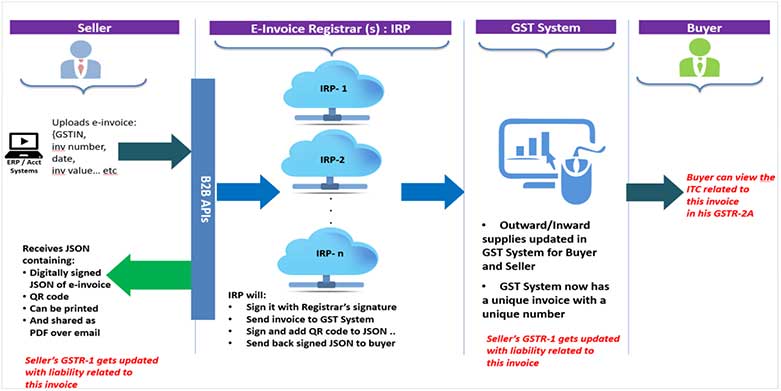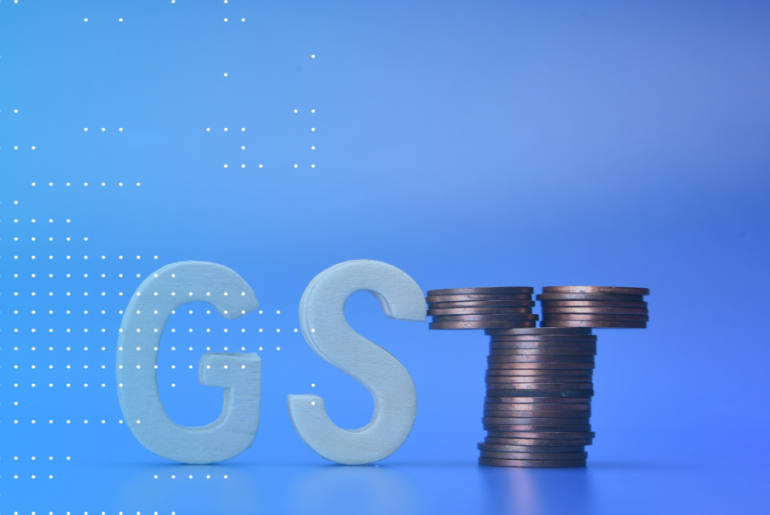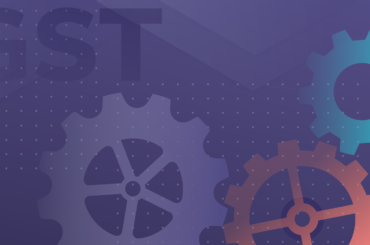The 37th GST Council meeting recommended the introduction of e-invoicing under GST in a phased manner. While the initial date was the 1st of April 2020 for its rollout, the government has notified a revised date for e-invoicing implementation i.e., the 1st of October 2020.
The new e-invoice system will revolutionise the way businesses interact with each other and will be another milestone in India’s journey to enhance the ease of doing business.
Table of Contents
What is e-invoicing under GST
GST e-invoicing is a system that electronically authenticates B2B invoices through the Goods & Services Network (GSTN). Under the system, an identification reference number (IRN) will be issued against every invoice by the Invoice Registration Portal (IRP).
This system is not built to prepare and generate invoices on the GST portal. Instead, it involves submitting already generated invoices on a common e-invoice portal.
Information from the invoices will be transferred from IRP to the GST portal in real-time. This will eliminate the need for manual inputs while filing GST returns.
Latest update on GST e-invoicing
Mandatory implementation of e-invoicing begins from the 1st of October 2020 for the taxpayers with an aggregate turnover of more than Rs 500 crore. Here, the aggregate turnover means the turnover of all GSTINs under a PAN across India.
The following persons are exempted from issuing e-invoices:
- Special economic zone (SEZ) units
- A banking company or a financial institution (including NBFCs) or an insurance company
- Goods transport agency
- Suppliers of passenger transport services
- Supplier of services by way of admission to the exhibition of cinematograph films in multiplex screens
You can do an instant GST number check using the Razorpay Number Search Tool, which helps you perform verification and authentication of a GST number for free.
Benefits of e-invoicing under GST
Technological advancements, increased internet penetration with the availability of computer systems at economical prices will make e-invoice – a popular choice for businesses.
e-Invoicing has many advantages for businesses in India.
- Reporting B2B invoices in the e-invoice form will reduce reporting of the same in multiple forms like GSTR-1, e-way bill, etc
- No tax evasion as a complete trail of B2B invoices will be available
- System-level reconciliation of input credit and output tax
- Auto-population of invoice details into GST return and other forms (like an e-way bill)
- Mitigation of fraud invoices
- Reduction in processing costs and disputes
- Improvement in payment cycles, and
- Advancement in overall business efficiency
Process of getting a GST e-invoice
‘e-Invoicing under GST’ does not mean invoice generation by a government portal. Taxpayers will continue to create GST invoices through their preferred method. These invoices will be uploaded to IRP. This portal will generate a unique IRN, digitally sign it, add a QR code, and return the invoice.
 The returned invoice can be downloaded as a PDF and print it as a paper invoice for future reference.
The returned invoice can be downloaded as a PDF and print it as a paper invoice for future reference.
Implications on businesses
Businesses will continue to create invoices as they are doing now. The new system won’t entail many changes to present methods. Software providers in their respective software will make required adjustments due to the e-invoicing requirement (i.e., to allow the reporting of invoices to IRP and to get IRN). They need to get the latest versions of the software.
If you’re wondering how to include profit margins and to get real-time GST inclusive and exclusive rates you can check out our free GST calculator.
Create GST compliant invoices with Razorpay
Businesses can create GST invoices with Razorpay and save a time of time & effort. The software is easy-to-use and generates comprehensive, detailed invoices in a few clicks.
Using Razorpay Invoices, businesses interact with a highly intuitive dashboard where GST invoices are created, shared, and updated whenever needed.
All they need to do is log in to the dashboard and click on ‘Create Invoices.’ On the next page, they can add customers (or select an existing one) and enter all the customers’ details.
These invoices can be saved as standard templates so that businesses don’t keep punching in the same details repeatedly. This further saves time and manpower.
Since the GST e-invoicing system has been implemented, businesses can create invoices via Razorpay Invoices, upload them on IRP, and generate unique IRNs for the invoices. Hurry up!





